How to distinguish squash seedlings from pumpkins?
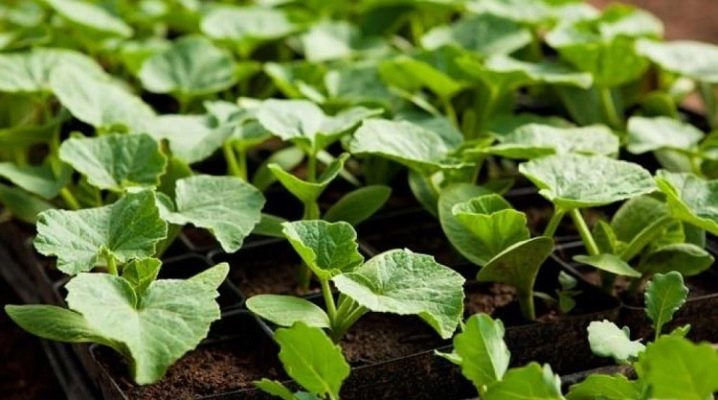
Zucchini and pumpkin are popular garden crops that are members of the same family - Pumpkin. The close relationship of these crops causes a strong external similarity between their young shoots and mature plants. At the same time, even at the stage of growing seedlings and transplanting them into open ground, the gardener can detect a number of differences between these crops. What are they all about?
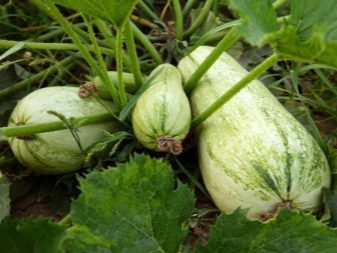
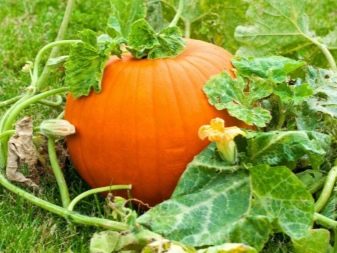
How to distinguish seedlings?
Many years of experience of many gardeners shows that growing squash and pumpkin by seedling method allows you to get a harvest much faster than through sowing seeds in open ground. Usually, in this case, representatives of the Pumpkin family can be obtained 2-3 weeks earlier than predicted. After sowing seeds in pots or a heated greenhouse, the first shoots of both crops appear almost simultaneously - after about 5-6 days. In some cases, early pumpkin seeds are able to germinate much faster than courgettes - approximately 3-4 days after sowing.
With a careful visual examination of zucchini shoots, it can be noted that:
- cotyledonous leaves have a slightly elongated, elliptical shape;
- the color of the leaves and stem is pale green, uniform, without visible veins of a paler or darker color;
- the surface of the leaves is delicate, smooth to the touch, covered with an almost transparent bluish film;
- stem - smooth, translucent, relatively thin and elongated upward.
In addition, upon visual inspection and to the touch, the plates of the cotyledonous leaves of the squash are rather thin, and the seedling itself looks fragile and weak in comparison with the pumpkin seedlings.
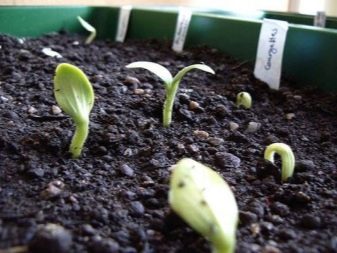
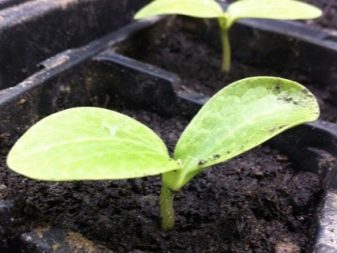
In turn, when examining pumpkin seedlings, you can see that:
- their cotyledon leaves are larger than those of a squash;
- leaflets are expanded in the central part and have a rounded shape;
- the color of the leaves and the stem is deep green (there may be thin veins of a lighter shade);
- the stem is strong, short, looks thicker and more powerful than that of a squash.
Pumpkin and squash shoots can be recognized even at the stage of formation of the first true leaf. The periods of its appearance in both crops also approximately coincide, however, when growing some varieties of pumpkins, real leaves can form 2-4 days faster than in courgettes. In zucchini, the first true leaf is slightly different in color from the cotyledon leaves; it has slightly serrated or carved edges. The shape of the leaf and its size usually depend on the varietal characteristics of the plant.
The first true leaf that forms on pumpkin seedlings has a darker color compared to the cotyledon leaves. Compared to zucchini, most often it has a larger size and a rather simple - rounded, cup-shaped or heart-shaped - shape. Additional signs that make it possible to identify pumpkin seedlings are a pronounced relief on the surface of its real leaves, their pronounced fleshiness, density and rigidity.
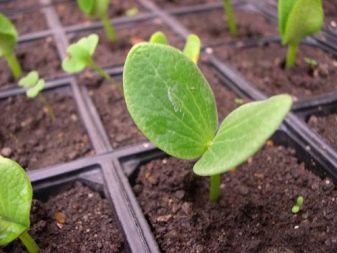

How do the leaves differ in adult seedlings?
Adult seedlings of representatives of the Pumpkin family are considered at the age of 25-30 days. At this stage of development, grown and matured plants already have 2-3 true leaves, have a thickened stem and a well-branched root system. The leaves of an adult seedling of zucchini, depending on the varietal characteristics, can have both a uniform herbaceous green and an original spotted color. The spots on the leaves of adult squash seedlings usually have a silvery-bluish color and an intricate shape. The shape of the leaves themselves is most often five-fingered, indented and, in the opinion of many experienced gardeners, more unusual than that of a pumpkin. To the touch, they seem velvety, thornless and rather soft.
The color of the leaves of adult pumpkin seedlings is emerald green, uniform (in some varieties, the leaves may have a spotted color). The surface is embossed, to the touch it is rough and coarser than that of zucchini. The petioles are pale green, shorter, fleshy and thicker compared to the squash. It should be noted that in most varieties of zucchini, adult seedlings have leaves located in a rosette on petioles, which rush upward. In pumpkins, they are closer to the surface of the earth, and the petioles themselves have a curved, slightly creeping shape. With a careful study of adult pumpkin seedlings, you can also find in its rosette the rudiments of future lashes, on which ovaries and, accordingly, fruits will form in the future.
In zucchini, the varieties of which form whips, the rudiments of the latter are formed, as a rule, later than in pumpkins, and in some varieties they do not appear at all. It should be noted that the whips of varietal zucchini are more fragile and thinner than pumpkin.
Another characteristic of climbing zucchini varieties that is worth noting is their inability to root locally in the soil. Pumpkin whips, on the other hand, are very willing to take root at the point where their branches touch the surface of the earth.
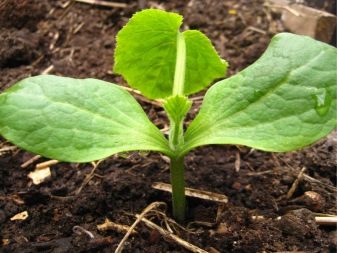

Other ways to determine
When growing squash and pumpkin seedlings in transparent plastic cups, you can often distinguish one crop from another by carefully examining their root system, which can be seen in good light. So, in young pumpkin seedlings, the roots will be characterized by strong branching, vigor and noticeable thickness. In a squash, on the other hand, the root system will appear more fragile, thinner, less branched compared to a pumpkin.
Among other differences between zucchini and pumpkins, some structural features and the location of their flowers should be noted. During the flowering period, in most varietal zucchini, the buds form near the core of the bush (rosette), while in the pumpkin they are usually located sequentially along the lashes. The color of flowers in both crops, as a rule, is almost always the same, ranging from bright orange to pale yellow. The shape of the flowers can be elongated, spindle-shaped, candle-shaped, compact elliptical. Distinguishing adult squash from pumpkins also allows the shape of their ovaries, which appear at the end of flowering. In zucchini, the ovary is usually spindle-shaped, while in pumpkin ovaries it is spherical or ovoid (in nutmeg varieties, it is bottle-shaped or elongated).
Another feature that distinguishes one culture from another is their growth rate. After the emergence of seedlings, the young seedlings of pumpkin are actively increasing the green mass, outstripping in this regard the seedlings of squash.
Further, with the development of both crops and the formation of their bushes, the differences become more and more obvious, since the pumpkin, intensively growing greenery, begins to surpass the squash both in height and in the diameter of the aboveground part.

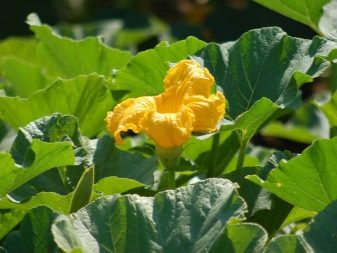













The comment was sent successfully.